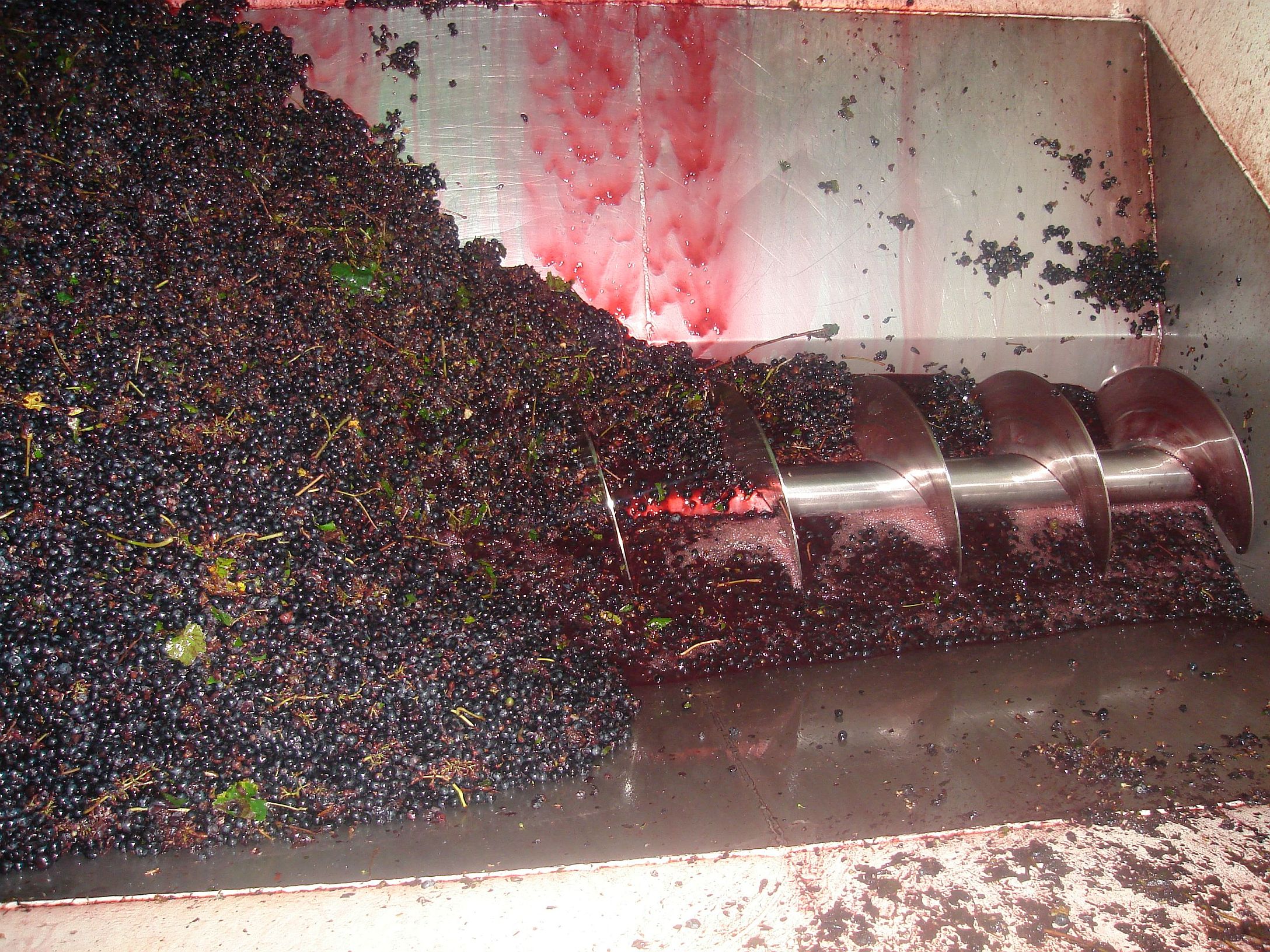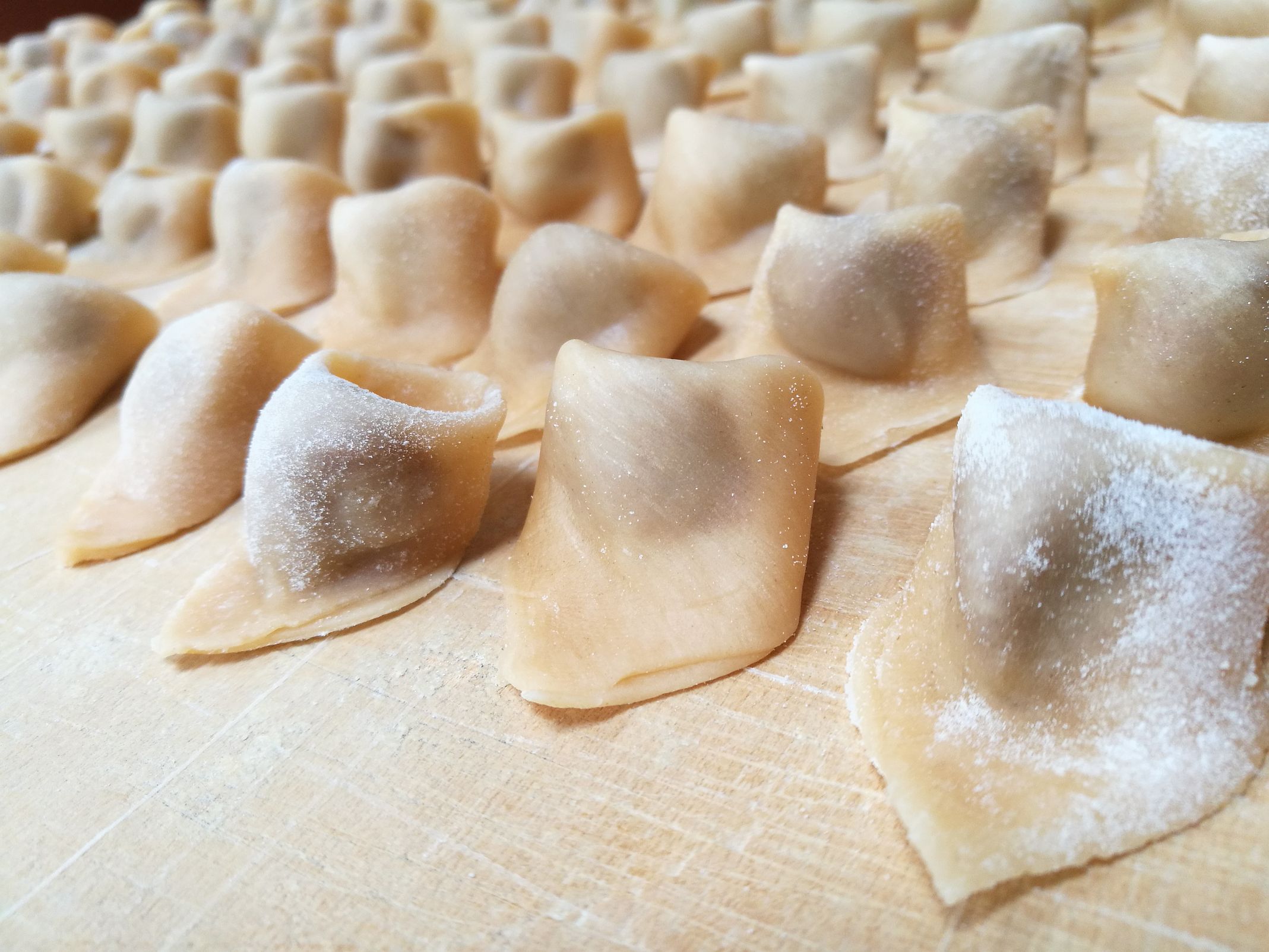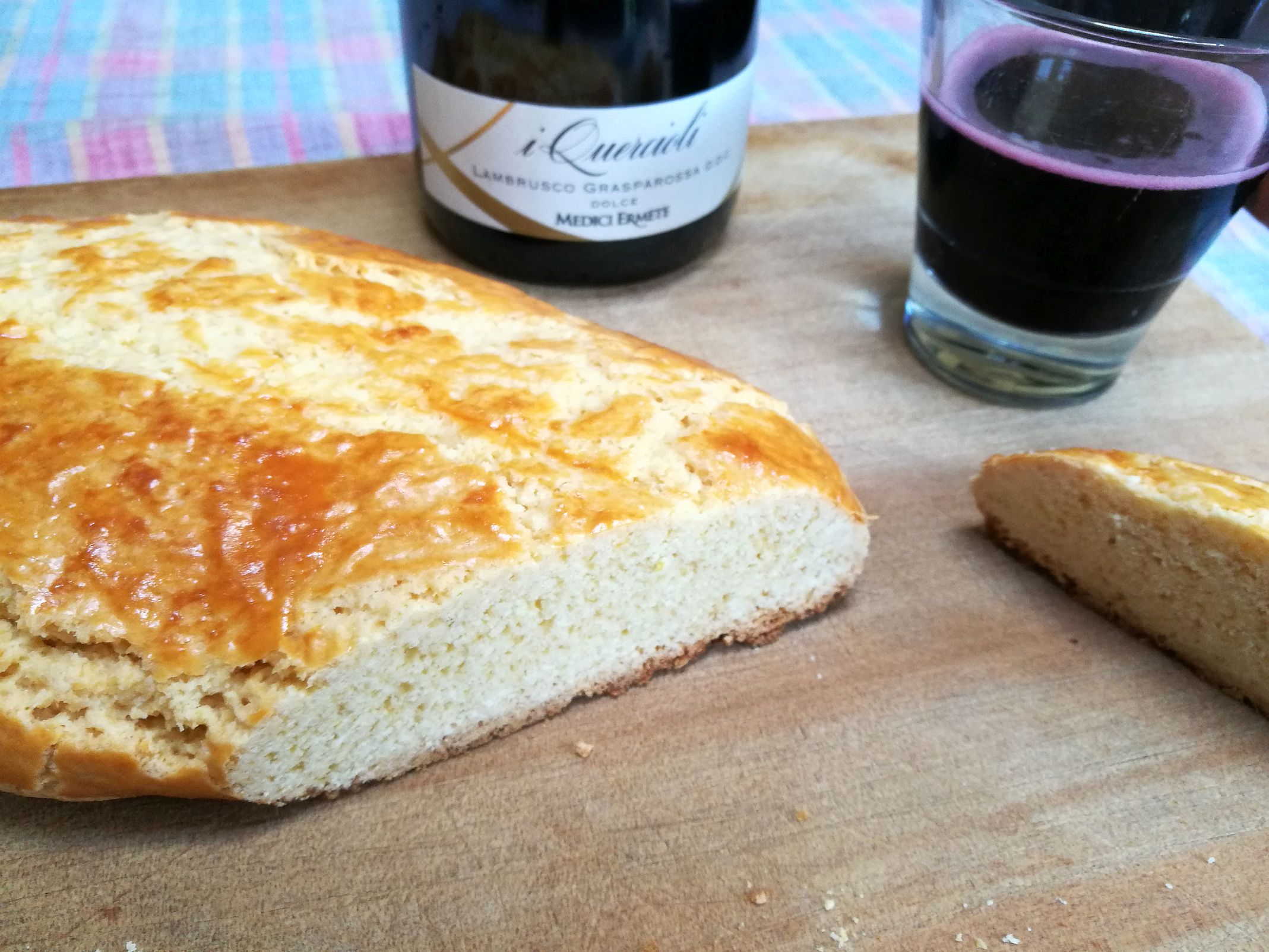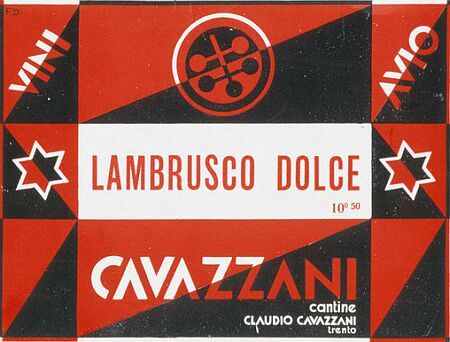Lambrusco is my madeleine. All it takes is one sip of this sparkling red wine for me to access a large part of my childhood, along with a host of associated flavors, textures, and gestures. I remember the ritual of bottling Lambrusco with my grandfather, who every year in the Fall purchased it in large demijohns from the local cooperative. The job consisted in transferring the wine into fifty or so bottles of thick burgundy glass. Each bottle had to be corked: first we softened the corks in boiling water, then we pushed them into each bottle using a simple, lever-operated machine that squeezed them as they went through. At the end of the day’s work we carefully placed the bottles in a small room under the stairs, where the contents continued to ferment. Since my grandfather procured a whole year’s supply in this way, the wine also kept time.
The Latin poet Virgil mentions the Lambrusco grape in the fifth of his eclogues known as the Bucolics. Nobody knows where the name vitis labrusca comes from, but the most accredited hypothesis is that it combines the words labrum, meaning the edge of a field, and ruscum, or wild plant. The Etruscans, the Gauls, and the Romans all used this grape to make wine. The Romans kept theirs in sealed amphoras to be stored underground or half submerged in cold water, to halt the fermentation; the process could be re-started by placing the amphoras in a warmer environment a few days ahead of consumption, thereby producing a light fizz. Proper cultivation of the wild plant from the edge of the fields didn’t begin until the late Middle Ages, and it wasn’t until around the year 1700 when the thick glass bottle known as Borgognona was introduced to Italy from the French region of Bourgogne (or Burgundy). Fitted with a cork secured with wire, this new vessel was able to contain the CO2 released during the in-bottle fermentation, resulting in a sparkling wine similar to the one that is drunk today.
My mother was born in the South-Eastern Lombard province of Mantua—the birthplace of Virgil—within sight of the Po River and the border with Emilia. This had been Lambrusco country for centuries and consumption of the wine regulated the lives of people of all social classes. Laborers would bring a cheap and slightly diluted variety of Lambrusco on the job, a practice I witnessed as a child when I played with my friends near—or more frequently on—the local construction sites. Production by this time had shifted to large factories owned and operated by cooperatives, where fermentation is ensured by large autoclaves before bottling, using the Charmat method.

About ten years ago, a cousin took me on a tour of the factory at Quistello during a visit home. I left with a small tub of vincotto to take to my teetotaler mother, who had never lost the childhood habit of eating the slow-cooked, non-alcoholic must that was produced on the side during the winemaking. Lambrusco found its way to be shared even by people who didn’t drink.
As for me, I got my first taste of Lambrusco as a very small child, as was customary. All of the major feasts featured a large lunch or dinner with the extended family (usually prepared by my grandmother), and all of these banquets were accompanied by Lambrusco. The children would not miss out. Even if our glasses were full of four-parts water to one-part wine, the mix was still bright red and slightly effervescent. It was our version of a soft drink.

In winter, the meals would feature cappelletti (stuffed pasta dumplings) in a beef and chicken broth, and we would be offered to partake in the bev’r in vin (literally “drink in wine”), an entrée consisting of the main course spiked with wine. On these occasions, without fail someone would recite the Mantuan proverb Al bevr’in vin l’è la salut ad l’omm: Drinking in wine is the foundation of human health.
When people say what dishes are best accompanied by Lambrusco, I find the phrase confusing; Lambrusco goes with all dishes and often in some dishes, too. Conversely, some other dishes go in Lambrusco. My father greatly enjoyed dunking in it a cake made with eggs, butter, sugar, and potato starch called torta sabbiosa, or “sandy cake.” Besides trying my hand at this particular recipe—it turned out slightly too crumbly for dunking—I also made a cake in preparation for this piece that is not part of my family’s repertoire, but is expressly associated with dipping in Lambrusco: the bensòun from the neighboring province of Modena, a dense sweet bread that goes perfectly with the red nectar.

Having emigrated to New Zealand twenty years ago and started a family here, I have found great comfort in being able to source the necessary ingredients to replicate the dishes of my childhood and of the generations of my family before it. It is a poor but nonetheless highly refined cuisine, borne of the necessity to make little go a very long way. The hardy Lambrusco grape, which had thrived for at least two millennia in the wild before being tended by humans, was an integral part of this cultural and physical landscape.
In the decades following the Second World War, Lambrusco experienced a commercial boom and became Italy’s main wine export, especially to the United States; there it acquired the moniker “the Italian Coca-Cola.” I find it curious that a drink of such modest origins and reputation would become a worldwide phenomenon. In San Francisco they say it goes well with Mexican food, and it would be churlish of me to doubt that claim; I owe it to such cultural collisions that I can find a decent bottle of the stuff on the other side of the world, including labels with protected denomination of origin. This guarantee is far from an empty signifier of authenticity; it tells me that the wine was produced using the proper grapes and according to the appropriate methods, methods both geographically and historically grounded, and by people such as my cousin as their custodians. That taste I am so familiar with, and that triggers so many memories, wouldn’t exist without them.
Post scriptum: In my grandparents’ village there was a blind man who spent much of his time going from one bar to the next, accompanied by one of his nephews. At each stop, he would ask for a glass of Lambrusco. Connoisseurs of the wine can judge its quality by the foam that appears on top after pouring and how quickly it disappears, and so, unable to verify this detail himself, the man would ask his nephew “Is the foam still there?” upon being presented with his glass. If the answer was yes, he would declare: “Then it is we who have to leave.”
Post-post scriptum: The recipe I used to make bensòun is as follows. Mix one pound of flour with two teaspoons of baking soda and a pinch of salt. Add the rind of one lemon, two eggs and half a pound of sugar. Melt 4 ounces of butter and work them into the mixture. Knead to form a soft, elastic dough, adding a little milk if necessary. Form the dough into an oval shape and brush it with an egg yolk. Bake at 350°F for 50 minutes.
Giovanni Tiso






